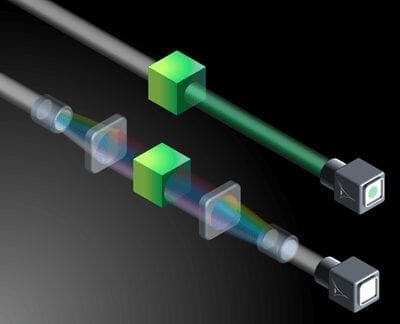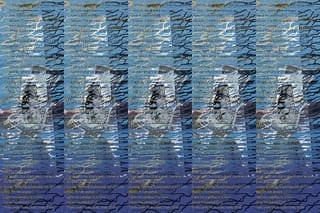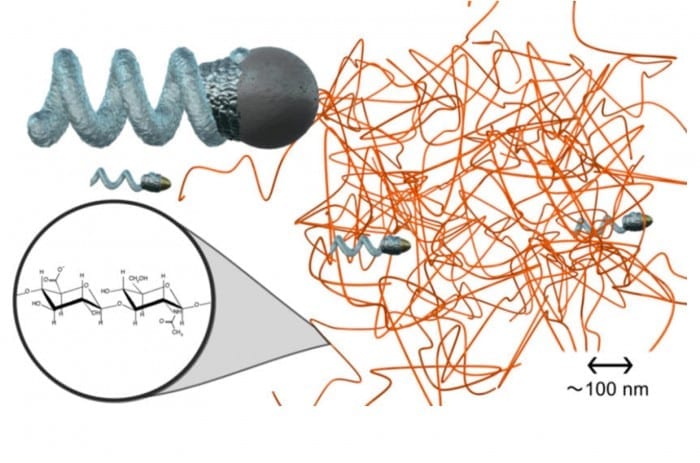
A new technique which uses light like a needle to thread long chains of particles could help bring sci-fi concepts such as cloaking devices one step closer to reality.
A new method of building materials using light, developed by researchers at the University of Cambridge, could one day enable technologies that are often considered the realm of science fiction, such as invisibility cloaks and cloaking devices.
Although cloaked starships won’t be a reality for quite some time, the technique which researchers have developed for constructing materials with building blocks a few billionths of a metre across can be used to control the way that light flies through them, and works on large chunks all at once. Details are published today (28 July) in the journal Nature Communications.
The key to any sort of ‘invisibility’ effect lies in the way light interacts with a material. When light hits a surface, it is either absorbed or reflected, which is what enables us to see objects. However, by engineering materials at the nanoscale, it is possible to produce ‘metamaterials’: materials which can control the way in which light interacts with them. Light reflected by a metamaterial is refracted in the ‘wrong’ way, potentially rendering objects invisible, or making them appear as something else.
Metamaterials have a wide range of potential applications, including sensing and improving military stealth technology. However, before cloaking devices can become reality on a larger scale, researchers must determine how to make the right materials at the nanoscale, and using light is now shown to be an enormous help in such nano-construction.
The technique developed by the Cambridge team involves using unfocused laser light as billions of needles, stitching gold nanoparticles together into long strings, directly in water for the first time. These strings can then be stacked into layers one on top of the other, similar to Lego bricks. The method makes it possible to produce materials in much higher quantities than can be made through current techniques.
Read more . . .
The Latest on: Cloaking device
[google_news title=”” keyword=”Cloaking device” num_posts=”10″ blurb_length=”0″ show_thumb=”left”]
via Google News
The Latest on: Cloaking device
- The Finals hyped ‘very cool’ update could be this teased new modeon April 25, 2024 at 5:29 am
The Finals developer has said that the next update will add 'something very cool' and it could be a previously teased new game mode.
- The Finals’ new update stuns Light class players the wrong wayon April 17, 2024 at 4:14 am
Start switching up your tactics in The Finals, as the latest The Finals update on PS5 and Xbox tackles Light players with these nerfs.
- The Finals Update 2.5.0 for Version 1.000.026 Brings Balance Changes This April 17on April 17, 2024 at 2:38 am
Embark Studios has released The Finals update 2.5.0 (PS5 update version 1.000.026) for several balance changes. Here is more info.
- Scientists solved the 70-year-old mystery of an insect's invisibility coat that can manipulate lighton April 15, 2024 at 10:13 am
A team of researchers created the world's first synthetic brochosomes in a huge step towards invisibility cloaking technology.
- Scientists solved the 70-year-old mystery of an insect's invisibility coat that can manipulate lighton April 14, 2024 at 5:00 pm
They hope their brochosomes will one day be used for invisible cloaking devices and other technologies. We tend to think of invisibility cloaks as science fiction. But one group of scientists has ...
- Cloaking Device: Liu, Joung Launch $100M Nvelop Therapeutics to Advance Delivery of Genetic Cargoon April 9, 2024 at 8:00 am
A $100-million startup is developing not one but two answers to the challenge that has long dogged the gene therapy field: How can genetic medicines best be delivered to patients safely and ...
- ‘Star Trek 4’ Beams Up New Screenwriter: ‘The Flight Attendant’ Creator Steve Yockey (EXCLUSIVE)on March 27, 2024 at 9:15 am
Story details remain under a powerful cloaking device, but Paramount Pictures and Bad Robot still intend the project to be the final chapter for the cast that rebooted the franchise in movie ...
- Backyard insect inspires invisibility devices, next gen techon March 18, 2024 at 6:24 am
This could allow the development of bioinspired optical materials with possible applications ranging from invisible cloaking devices to coatings to more efficiently harvest solar energy ...
- How To Use The Cloaking Device In The Finalson February 20, 2024 at 1:02 am
The Finals features three classes that can be devastating or almost useless on the battlefield, depending on your gadgets and skill level. By watching the top 500 players do their thing, you can ...
- The Cloaking Devices Of Star Trek Explainedon July 12, 2023 at 2:12 pm
Starting from a real-world perspective, Star Trek’s cloaking devices were first developed (though not yet named as such) by screenwriter Paul Schneider for the Original Series “Balance of ...
via Bing News











